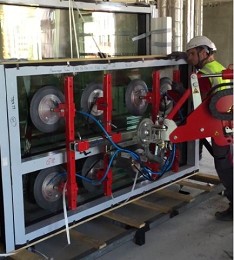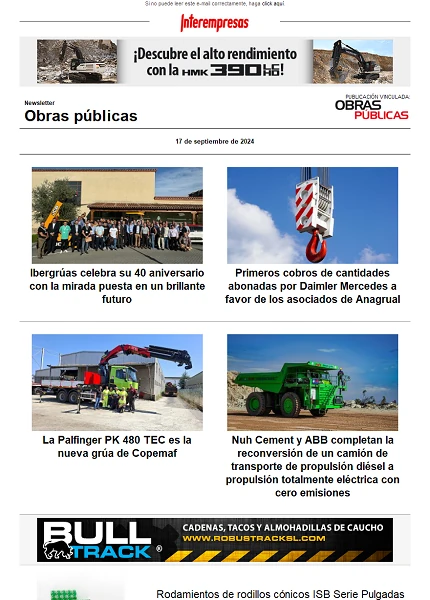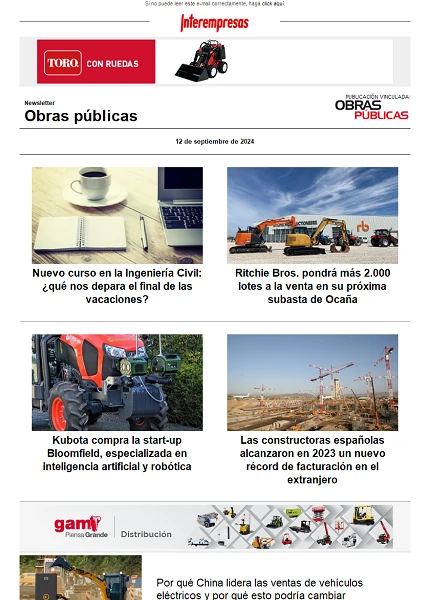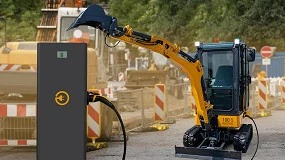Artificial intelligence for the public works machinery
December 21, 2009
The elements used in the Automation are:
- Sensors which provide information on the status of the machine (both position, as a guideline) on the Earth's surface. Find systems with two types of references: global, based on satellites that emit signals of reference and supplemented with GIS software; and local, using local positioning stations based on laser and optical systems of precision.
- Sensors that provide information with respect to the environment of the machine. We are systems based on artificial vision and laser being the most prominent and innovative scanners laser 3D (Lader).
- Sensors that provide information on the machine, we can find: inertial systems based on gyroscopes, accelerometers, and inclinómetros; systems for the measurement of loads and efforts (useful in construction machinery is mainly security, although they could be used as elements of data capture for productivity studies); systems for measuring position and angles used to measure the relative position of the joints and axes of the machine and sensors for measurement of consumption, time of work, efforts, etc., which provide us with information on the energy performance of the machine that help in the safety and maintenance.
- A system to collect information from the sensors, this includes both the wiring (either in the form of bus or point or through wireless point-to-point) and electronics that transforms information from the sensors in digital data.
- A system of interface with the operator (HMI), which includes both the screens for the presentation of data (both tactile and conventional) and controls (joy-sticks, keyboards, etc.) used to communicate to the machine the slogan.
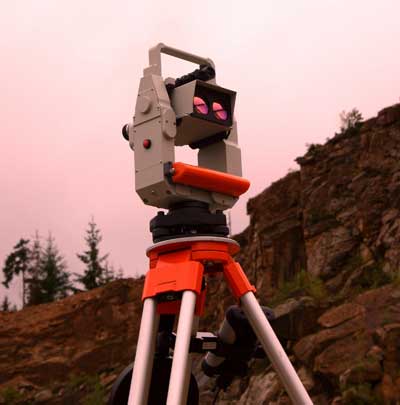
- A system of processing of the data (ECU). To make the machine perform tasks automatically need this system to perform the function of control, calculating actions that must be executed according to the slogan which the operator has been established and the information provided by the sensors. If only ongoing functions of monitoring and information to the operator, the system must only process them to display useful information to the operator.
- If you want a monitoring or remote control should incorporate some form of wireless communications: radio, Wi-Fi, infrared, Bluetooth, Zigbee, etc.
- The normally hydraulic actuators must be adapted to be able to be handled by the control system. Thus closes the control loop.
To run the control system need a software to perform a smart feature Act on the elements of work of the machine according to a motto for the realization of the desired function, with the captured information from sensors. These algorithms can divide them into the following categories:
- Traditional control systems, based on feedback loops that follow the laws of the traditional servomechanisms. Mainly based on loops of type proportional, integral, and derivative (PID).
- Adaptive control systems, which modify the control parameters according to the evolution of the properties of the environment or the machine itself.
- Decision-making systems based on expert systems, neural networks and pattern recognition methodologies.
All these systems manage information obtained via sensors and detectors, allowing that it expands at various levels as information at the domestic level of the machine (automatic control system), information to the operator of the same (systems of supervision and monitoring of the work), information to the Manager of the process (management systems work and information at the level of management (project management systems).)
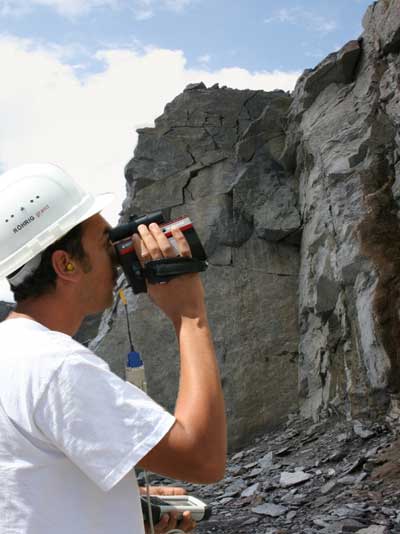
Technologies to get the automation systems in machines are available and in the market are the right products to be incorporated in them. The current challenge is the integration of these systems to achieve tasks more smart and safe. So many of the investigations focus on the processing of data and decision-making software.
Many of the technologies that are likely to be exploited in the automation of machines in the sector of public works will be taken from other technologically advanced sectors such as the car industry (electronic exchanges, networks of sensors...), the industrial robotics (field, machine vision, Virtual manipulatives bus control systems...) or even of the new technologies of automatic vehicle guidance (AVG).
The most innovative
On the other hand the elements that more innovation are contributing to the automation of the machinery of public works are those relating to the relationship of the machine with the working environment.
Thus we find:
- Ultrasound: they are short-range and they are used in sensors measure of distance from the elements of the machine to work area, such as the position of the blades in the levelling of land.
- Global positioning systems: are systems based on position information provided by a constellation of satellites. GPS is the American system, Glonass Russian and the future European system Galileo. Precision is good to find a machine, but not to make an automatic guided. So to increase the resolution to levels sub-centimétricos is necessary to use as a complement ground, along with a special software and a communications system stations. Trimble has been incorporating GPS systems since 1998, being pioneer in the application of these systems to the public works machinery and construction. Lately has developed a much more precise GPS RTK GPS or GPS type cinematic in real time, with precision of +/-2 cm. Its usefulness is essential in the current road construction projects and control the movement of land.
- Laser: used for determination of the level, profiles, alignments and distances. Rotating lasers that can be used as vertical, horizontal references or mark pending are.
- Optical systems: systems of monitoring of work called Total station. The system compares positions, allowing monitoring of accuracy of the location of each element, the laser distance measures can be completed. The technology makes use of software and micro motors precision for the precise positioning of the internal lenses.
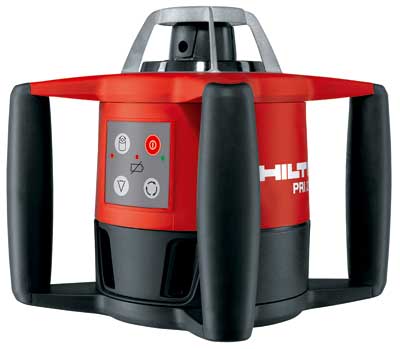
- Artificial vision systems: systems for the recognition of the signal processing by environment. The image only provides information in two coordinates, which are used for the identification of certain parameters of the material on which the machine should work: cracks in concrete, pavement, etc. To navigate enquiring of the third coordinate, the depth or distance. For this it is necessary to use two cameras ready for stereoscopic vision or complement the information with a system of measurement of distance (laser or ultrasounds).
- Sensors for the characterization of the behavior of the material. Are sensors that inform the machine on data of the material used, such as degree of compaction of pavements, density of asphalt, etc. Positioning systems have evolved to other more complete containing a set of data, linked to the GPS position, such as load cells, positions articulated arms, etc.
When multiply sensors are used buses of field (communication networks for electronic systems in industrial environments or vehicles), being the most widespread seek, although various manufacturers have their own protocol.
Current state of automation machinery of public works at the national and international levels
The automation of a machine of public works is the capacity in the same to perform certain tasks independently, without the direct intervention of the operator. There are two ways to achieve this goal:
- Construct machines designed for this purpose by way of specific robots for certain tasks.
- Adapt existing machines for automation.
With regard to the robots, machines designed to perform a special function in an intelligent manner, which are often referred to as robots for construction or public works, they are not currently an industrial activity, as such, but are they confined to the experimental area and specific solutions for very specific problems. Fully autonomous systems are under investigation, due to the large navigation problems for environments not structured, such as those of a machine of public works. Need much processing information are not capable of enhancing the work at the same speed that an expert operator advise them only where working with operators is dangerous or difficult for size or scope.
Examples of these machines are: robot for demolition in nuclear power stations, robots for inspection and work in pipes, robot for inspection of tunnels and robots for maintenance of structures and pavements.
Systems based on mobile robots with proximity to the wall and cameras for machine vision sensors have been developed for the supervision of the State of the walls of tunnels.
On the other hand, the adaptation of machines to the automation implies a greater interest to the industry of the machinery of public works, for two main reasons:
- Working on already known machines, the manufacturer, both for the user.
- It is easier to define the scope of automation, incorporating phased elements who increasingly carry out operations more autonomously.
Develop models of the machine in 3D, incorporates sensors in joints and incorporating the treatment of the information and communications systems.
Another adaptation is the incorporation of remote control systems such as the teleoperadas machines. They allow the operator to put in a safe position, also allows you to get the best view to the completion of the transaction and finally it avoids you be subjected to vibrations that would send him the machine.
These systems are developed for machines of type crane, concrete trash compactors and special demolition machines.
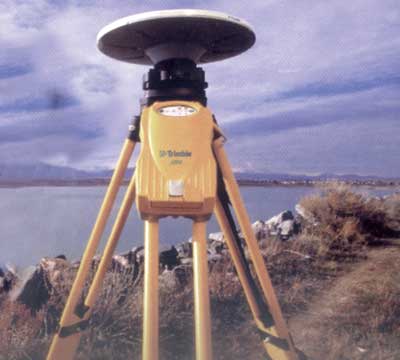
Information systems the user to indicate to the operator as he is doing the work, both from a geographical and geometric point of view, and on the progress of the process, providing information on the modification of the properties of the materials used.
Thus, in the field of compaction monitors trajectories to record the number of passes of the compactor, so as to help the operator as to manage the work, GPS systems, laser and wireless communications are used.
For a more effective control works in systems that integrate both the ground and the machine, calling this technology: 'geomecatrónica', thus enabling a comprehensive control system adapted to the environment. In some State of the process of compacting of soils based on frequency of vibration, breadth of efforts and the speed of progress is monitored continuously.
Trends
The international trend is the incorporate way more standard elements of control and information on the public works and construction machine. At the national level, there is a concern for these technologies, although the sector has a great inertia. The impact of these technologies at the national level will be progressive, to reach international levels. Partial objectives of automation that will help to assimilate these technologies and to increase its reliability and confidence are to be elected. These objectives could be:
- Control of internal systems for energy saving machine or the increase in performance.
- Incorporation of systems for recording data to aid in the location of breakdowns and maintenance.
- Incorporation of systems that measure the quality of the work, capturing data on the behaviour of the materials.
- Incorporation of information systems to the operator on the work carried out and its adjustment to the provisions of the draft.
- Replacement of eminently mechanical or hydraulic controls by other electrical, giving way to systems servocontrolados with its usability improvement.
- The teleoperation of machines for reasons of safety and comfort of the operator.
- Integration of global positioning and communication systems as an aid to the management of major public works projects.
- Automation of subtasks, being executed the main task for the operator.
Difficulties in the implementation
The difficulties encountered in the penetration of systems of automation in these machines are as follows:
- At the level of development: need for incorporation in the companies of technical experts in these technologies.
- Increase in the cost of the machine. Obviously the incorporation of sensors, control, communications and monitoring systems, represent an increase in the cost of the machine, but also in the value of the company and its capabilities.
If you transmit this information to the buyer, the process of evolution will be possible.
The necessary technology for the incorporation of these systems is entirely related to new technologies (GPS, laser, intelligent sensors, sensor, decision, systems of communication systems, networks etc.) which is a field of work very different from the traditional r & d of the machinery of public works (resistant materials)(, coatings, mechanical, etc.).




